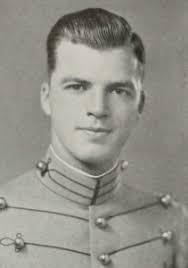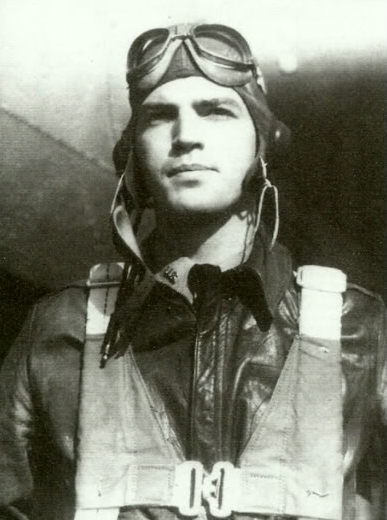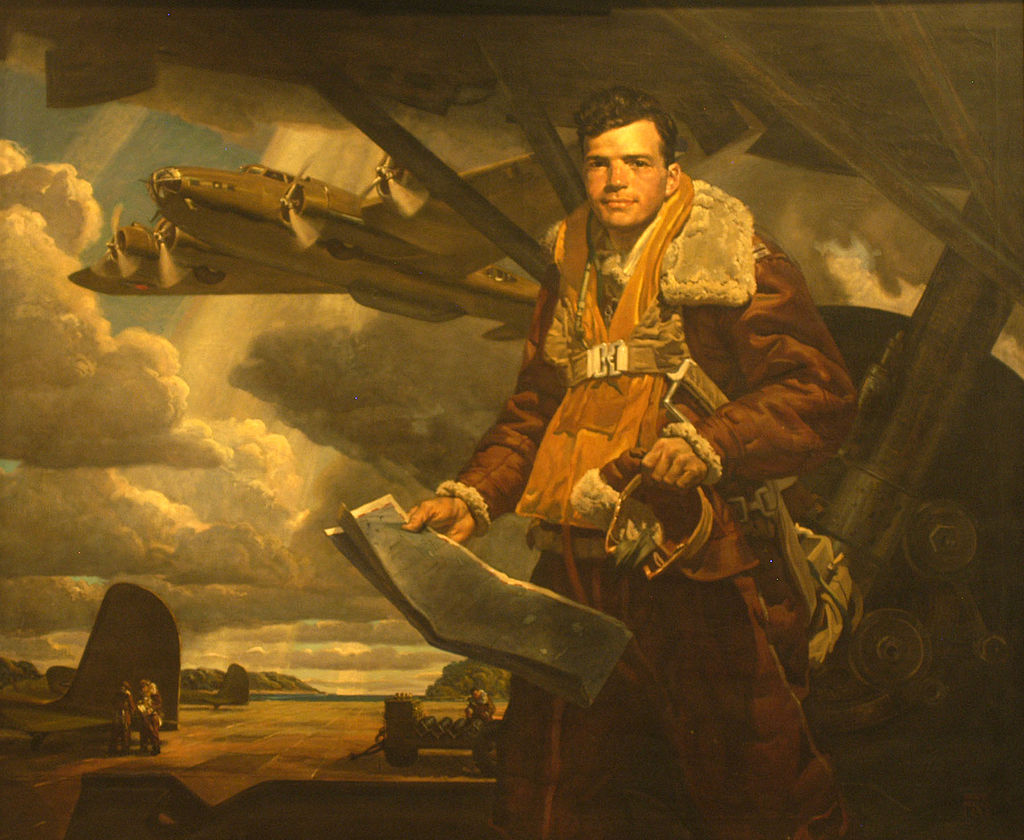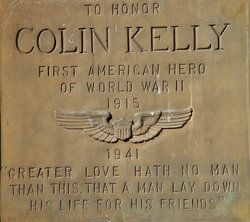CAPTAIN COLIN KELLY, JR. AMERICAN HERO
BY RICKEY ROBERTSON
In December 1941 America had been attacked. Yes, we remember what happened on 9-11 when the terrorists hijacked the passenger planes and crashed them into the World Trade Center buildings. But in 1941 it was an attack that started at Pearl Harbor and went throughout the Pacific and into the Philippine Islands. In the Philippine Islands General Douglas MacArthur had an army and air force that that was vastly outnumbered, and most of all, vastly unprepared.
As the American fleet lay destroyed in its fleet anchorage at Pearl Harbor, the Japanese began their attack on the Philippines. And just as at Pearl Harbor the Americans were not prepared for the forthcoming attack. Planes were lined up in rows at Clark and Nichols Fields and other auxiliary fields at Iba, Del Monte, and Del Carmen. And suddenly the attack came the day after Pearl Harbor had been ravaged.
As waves of Japanese fighters and bombers came over, aircraft were destroyed before they could take to the air. Only a very few planes survived, and many of these planes were damaged. One American pilot in the coming days was to become one of the true heroes of World War II. This pilot was Captain Colin Purdie Kelly, Jr.
Colin Kelly was born in 1915 in Madison, Florida. As a youngster he was interested in flying. After he completed high school in 1932, he received an appointment to the US Military Academy at West Point in 1933. Colin Kelly graduated in the Class of 1937 from West Point and was assigned to the US Army Air Corps. Kelly took his pilot training and became a B-17 heavy bomber pilot. With war looming on the horizon with the Japanese, Captain Colin Kelly, Jr. and his crew were assigned to the Philippine Islands for duty. Captain Kelly was the first US Army officer to fly the B-17 bomber in the Far East. Captain Kelly's B-17 unit was assigned to the 19th Bombardment Group 30th Bombardment Squadron at Clark Field in the Philippine Islands.
After the Japanese attack, the few planes that were left to the American and Filipino forces were used to attempt to stop the impending Japanese invasion. Captain Kelly and his crew flew several bombing missions the first days of the war against the Japanese Navy. But on December 10, 1941 Captain Kelly and his brave crew were sent on a bombing mission to attack Japanese Navy ships off the coast of Luzon. On this mission the crew observed what they thought to be a Japanese battleship. They believed that this massive ship was the battleship Haruna. At an altitude of 20,000 feet Captain Kelly began his bombing run on the target. His bombardier, Sergeant Meyer Levin, dropped three 600 pound bombs on the large ship. Through all the smoke the crew believed that one bomb had hit the ship and that it was on fire and was possibly destroyed. But the ship was not the Haruna but instead a large Japanese transport or light cruiser. Records after the war showed Captain Kelly's plane had damaged the Japanese cruiser Natori. As Captain Kelly brought the B-17 around to head back to Clark Field, Japanese fighter planes attacked the bomber, followed it, then attacked it again. As Captain Kelly's plane approached Clark Field the bomber caught fire due to the damage from the attacking Japanese planes. Captain Kelly ordered his crew to bail out. Due to the damage to the B-17 Captain Kelly was unable to exit the plane and when it blew up he was killed instantly. American and Filipino troops rushed to help the survivors and near the site of the wreckage, Captain Kelly's body was recovered. He was buried with honors in the Philippines.
But Captain Kelly became a hero due to what American's thought was our first victory against the Japanese aggressors. The message sent from the Philippines to the United States was garbled but the public thought that Captain Kelly and his crew had destroyed a Japanese battleship. Americans thought that Captain Kelly was awarded the Medal of Honor for his actions, but in reality, he had been awarded the Distinguished Service Cross, the nation's second highest award for heroism, due to his attack on the Japanese ship and for sacrificing his life so that his crew could bail out during the engagement.
America needed a hero and they got one in Captain Colin P. Kelly, Jr. I salute him as a hero for his actions. Captain Kelly left a wife, Marion, and a year and half old son, Colin P. (Corky) Kelly, IV. President Franklin Roosevelt on December 17, 1941 wrote a letter to "the President of the United States of America in 1956" to allow Captain Kelly's son an opportunity to attend the US Military Academy at West Point where his father had attended. And yes, that son did attend West Point, graduated and became an Army Officer. He later attended Divinity School and returned to the military as a chaplain where he later retired.
After World War II ended Captain Colin Kelly's remains were brought from the Philippine Islands and were buried at Oak Ridge Cemetery in his hometown of Madison, Florida. An American hero had returned home. Posthumously Captain Kelly was awarded the Distinguished Service Cross and the Distinguished Flying Cross for his heroic service to our nation. Throughout America there are many locations named in honor of Captain Kelly. During World War II the US Liberty Ship SS Colin P. Kelly, Jr. was named in his honor. In San Francisco there is Colin P. Kelly, Jr. Street and near Wright Patterson Air Force Base there is Colin Kelly Drive named in his honor. And in his hometown of Madison Florida there is the Four Freedoms Monument re-dedicated in his honor and Colin Kelly Highway was dedicated in his honor.
When America faces danger from abroad brave men and women step up and stand up for our nation just as Captain Colin P. Kelly, Jr. did during World War II. These American heroes stand up for America because there is a Star Spangled Banner waving somewhere in the breeze. This is our flag and we are proud of it! America truly is the home of the brave!


Captain Colin P. Kelly, Jr. was assigned to the Army Air Corps and became a B-17 pilot after graduation from West Point. (US Air Force Photograph)

